Written by staff blogger, Vicky
In February 1919, the beast that is winter was once again running rampant through the streets of Halifax on its oversized paws. It nipped at the heels of citizens with a frosty bite, slicked the sidewalks with ice, and squealed with a hideous joy in the harsh wind. The night of Tuesday, February 18 offered a small reprieve: the snow from the previous day had stopped, though the freezing temperatures were still enough to pierce the skin and leave Haligonians chilled to the bone.
But something more sinister than the winter cold would roam the streets of Halifax that night. Something unexpected.
It began with a late-night dinner.
The Crown Café
The Crown Café at 80 Gottingen Street—with its warm light emanating from the front windows—would have no doubt appeared very inviting on a dark, cold night. The café was a well-known Chinese establishment operated by Lyon William.
At around 11pm, a man entered the café. According to reports, he was a soldier recently home from Europe—World War I had ended only a few months previous. Over the course of recent weeks the man had visited the café frequently and had become a known face to the restaurant staff. The soldier ordered a meal and ate, but when the time came to pay he refused.
An argument began between William and the soldier. Although it was heated, it seemed to end when William told the man to leave his establishment; the restaurateur was willing to take the loss of the unpaid meal for the sake of having the soldier off of his property. The man agreed, but asked if he could first purchase a package of cigarettes. The soldier placed ten cents on the counter. When William informed him the cigarettes cost fifteen cents, the soldier hit the lights to the café and the room went dark.
The man reached for the open register and grabbed a handful of cash, upwards of $75. He then picked up the register itself and threw it through the Crown Café window as he cried out into the street for help. The café staff stood at the back of the room, keeping their distance as the man vandalized the restaurant.
Before long, a crowd had gathered. A rumour begun to spread that the soldier had been assaulted by William. However, when two police officers arrived on the scene, it was clear to them that the gossip had no substance. The officers were able to convince the soldier to leave, and it seemed the ordeal was over. One officer remained with William at the café, while the other left to attend to a fist fight occurring on nearby Cunard Street.
At around half past eleven, the soldier returned. He was not alone.
Perhaps fueled by the rumour that it was William who had attacked the soldier, a crowd of people approached the café. The police officer on the scene called for back up and attempted to calm the crowd, but it was no use. The mob grew quickly and raided the Crown Café, destroying the property inside and out. But their havoc did not end there. The horde made their way southward.
The Busy Bee Café
The Busy Bee Café at 13 1/2 Gottingen Street was indeed living up to its name. The restaurant was filled with guests who had recently come from the Gaiety Theatre on Jacob Street. It too was a Chinese-owned establishment, operated by George Lee. From inside, patrons and staff could see the approaching gang and chose to flee. Like the Crown Café, the Busy Bee was viciously vandalized.
More police arrived on the scene. They were delivered by an ambulance that had picked up as many officers as it could find on its way to Gottingen Street, but by this time the crowd of rioters had grown too large. The police could do nothing but follow the mob as it made its way downtown.
The Nova Scotia Café
The violent mob reached Brunswick Street. The Nova Scotia Café, sometimes called the Nova Café, was the next to be hit. The target was yet another Chinese run business operated by Jim Lee. Like the Crown Café and the Busy Bee Café, the damage to Lee's establishment was severe: windows were broken, furniture was destroyed, and cash registers and cigarette displays were looted.
The noise and commotion of the rioters gathered more and more attention as it made its way through downtown. Additional citizens gathered in the streets. Some joined in with the rioters; others watched in amazement from a distance, wondering what would happen next. It was reported that every police officer in the city was called to the scene, but it wasn't enough to subdue the band of rebels. The crowd continued to move south.
The Victory Café and the Allies Café
Reaching Barrington Street, the mob made attacks on two more Chinese-run businesses. The Victory Café located at 626 Barrington Street, operated by Jack Hun, and The Allies Café at 588-590 Barrington Street, managed by Thomas Harley. The two restaurants were ransacked inside and out. The Victory Café also suffered fire damage after rioters overturned the stove in the restaurant. Thankfully the fire department was able to control the flames. The Allies Café was reported to have suffered the greatest monetary theft, with approximately $300 (about $4,600 today) stolen from their cash register.
As the rioters raged on, the police attempted to gain control of the crowd, but it was clear they could not do it on their own. They needed backup.
The Frisco Café
The mob moved through downtown, but reached opposition as they came to the Frisco Café at 62 Sackville Street. Reports state the crowd was halted by the Caucasian wife of the Chinese proprietor. Sources indicate her name may have been Raye Tom.
The Frisco Café was operated by Harry Tom and Loo Sing. According to census records, Tom immigrated to Canada in 1914, and after arriving in Halifax, he met and married Raye (maiden name unknown). Though the 1921 census simply lists "wife" as her occupation, it is likely that Mrs. Tom also worked to support the café, and had every intention of keeping it in one piece. As the threatening crowd approached the restaurant, Mrs. Tom placed herself in the doorway to protect the family establishment and stood her ground against the rioters. Perhaps it was because she was indomitable and refused to move, or perhaps it was simply because she was white, the rioters did not attack the Frisco Café with the same vigour as the previous businesses. The only noted damage was a broken window.
As Mrs. Tom faced the crowd, the city police joined with backup from the military and naval police. Provost Marshal Major Watson and his assistant, Captain Mooney, stood by the Frisco Café and denounced the rioters, pleading with them to go home. They attempted to appeal to the mob's sense of nationhood; the pair reminded the rioters that the Chinese were allies of Canada and Great Britain during the Great War, and as such they did not deserve this type of treatment. Eventually, between the city, naval, and military police presence, the crowd disbursed. Officers remained downtown in the area of Chinese owned businesses in case tempers flared again during the night. At last, quiet seemed to settle upon Halifax. It seemed the worst was over.
The Aftermath
Human Casualties:
No physical casualties were reported as a specific result of the riot. However, Fong Wong, the owner of a laundry on Agricola Street, was badly beaten earlier in the day. No connection was officially proven, but it was at the very least an unfortunate coincidence.
Arrests:
The following day, police were able to track down the man they considered to be the instigator of the riot: Thomas Andrews, a soldier recently returned from military service overseas. It is said he was charged with damaging property, but police records do not show his name in their charge books for that evening. Two other men, one from Pictou and one from Halifax, were arrested and charged with theft.
Return to the Crown Café
The quiet did not last.
At around 10pm the next evening, a group of civilians and soldiers in uniform gathered near the police station at corner of Barrington and Duke Street. Officers, including Police Chief Frank Hanrahan and Provost Marshal Major Watson, addressed the crowd and told them to leave the area. One soldier, identified only as Yates, stated that the crowd would not disburse until Thomas Andrews was released from jail. The Chief and Major walked Yates through the police station to show that Andrews was not there. Upon their return, Yates and the officers informed the crowd there was no one to release. At this news some members of the crowd returned home. Others moved as a group into the North End singing as they walked.
As the group moved through the crowded downtown core it attracted additional people. The crowd was peaceful, if not loud, until they stopped in front of the Crown Café. The windows of the restaurant - which had been replaced only a few hours prior - were once again shattered into pieces. The restaurant was attacked with large pieces of wood, crowbars, and other tools until the front door was damaged enough that the assailants could gain entry. However, the café was nearly empty after the destruction from the riot the night before. Seeing nothing of value, the mob moved on.
Further Casualties
Several other businesses were caught in this new wave of destruction. A tobacco shop owned by Mr. Bernstein at 21 1/2 Gottingen Street, which had only opened the week before, was gutted: the windows smashed, tobacco and other smoking paraphernalia were stolen, and the cash register along with its contents was taken. Next door at 21 Gottingen Street, Mrs. Joanna Patton's shoe store was also destroyed. The Halifax Herald describes this particular raid:
The Patton shoe store, next door to the Bernstein shop, was attacked next. Here the same performance was repeated. Signs which covered the shop front were torn down, the windows crashed in and the mob entered the shop to destroy its contents. A shower of footwear was swept onto the street and for a time the air was think with flying boots. Several spectators were struck and cut or bruised...
(February 20, 1919 p. 2)
From here, the mob turned and once again began to trek south. On their way, they broke the windows of several businesses along Argyle and Brunswick Streets including the Union Cigar Store, Shoffer's, Allen's Fruit Store, and Webber's Shoe Shop. But when they made it to Barrington Street just before midnight, the police were waiting.
Having been advised of the mob's trajectory, the city police, along with military and naval support, pounced on the rioters and did not hold back. Officers had been give the order to use their clubs if necessary. The Halifax Herald described the scene as "a lively five minutes", in which soldiers and civilians alike felt the pain suffering in "various degrees of damage". After this display of force, the rioters had fully disbursed within the hour.
The Aftermath
Human Casualties:
The day after the riot, the Halifax Herald reported that hundreds suffered from minor injuries like cuts and bruises, and a dozen people were sent to hospital for "more or less serious" injuries. Only two were mentioned as having specifically serious injuries: two soldiers named "McLean" and "Giffin" who had been "laid out", presumably knocked out, by police. The men were taken into custody, and then to the hospital for treatment.
Arrests:
A total of eight people were arrested during this second night of rioting, including the aforementioned "McLean" and "Giffin". At 3:30am on Thursday, February 20, the police issued the following statement, as printed in the Halifax Herald:
The rioters last night got the start of us on Gottingen street, but we marshalled our forces and stopped them before any damage was done on Buckingham street. Strong means were used last night to check the riots. Stronger means will be used in the future. Persons who take part in riots must suffer the consequences. We have arrested five of the ringleaders; we are protecting property and citizens. But we are outnumbered. We ask that all law abiding citizens help us to meet this situation.
(February 20, 1919, p.1)
Police/military and naval presence remained active in the downtown core after the riot. Special conditions were placed on soldiers; they were not to be in downtown unless on urgent business, for which they had to present permissions from ranking officers. Any solider who was discovered in downtown Halifax without authority would be arrested on the spot. The full police force was on duty both day and night, with additional civilian volunteers, many of whom were a part of the Great War Veterans' Association.
The Cost
A total of six Chinese businesses were damaged during the first riot, at an estimated cost of $10,000-15,000, or approximately $152,000-228,000 today. A total of nine stores were damaged in the wake of the second riot, at an estimated cost $20,000, or approximately $304,000 today.
Many people made the argument that the city should be responsible for paying the damages the businesses suffered: "The fact is that the property owners who are paying the City for police protection have lost heavily because of the City's inability to fulfill its bargain... the fault lies with the City and the City must pay." (Halifax Herald, February 24, 1919, p.1). The city, however, brushed off the financial responsibility. The Chinese consul sought support with the federal government instead; the fight for compensation took years. Many of the Chinese proprietors targeted by the attacks lost everything they owned as a result.
Cries for Justice and a Return to Order
After the riots, The Halifax Herald published letters by various organizations pleading for a return to civility and order, as well as justice for the Chinese citizens of Halifax.
One such letter stated:
Every decent citizen is indignant over the disgraceful riots of Tuesday and Wednesday nights - riots planned and carried on by a little group of degenerates who succeed in securing the support of a handful of men in khaki... Law and order MUST prevail in this city. No gang, whether it is composed of civilians or returned soldiers, will be allowed to destroy property, harass the nerve shattered women and children and secure control of this great port.
Halifax Herald, "Prompt and Fearless Action Up to the Civic Officials", February 21, 1919, p. 6
The Great War Veterans' Association printed a letter as well aimed specifically at soldiers who had recently returned home:
... the majority of returned men throughout the whole Dominion deplore the participation of any returned soldier in these silly and unnecessary disturbances. DO YOU REALIZE THAT WHEN YOU ARE LED TO PARTICIPATE IN THESE DISTURBANCES YOU ARE BEING USED BY ALL THE SLACKERS AND HOODLUMS IN THE CUMMUNITY AS A CLOAK TO GAIN IMMUNITY FROM THE CONSEQUENCES OF THEIR ACTS?
Halifax Herald, "Some Wholesome Advice To The Men Who Took Part In The War", February 21, 1919, p. 6
The Zionist Organization also ran a notice stating:
We, the people of Halifax... look to our returned soldiers, who have staked all in life for Justice and Democracy, to take immediate moral action and check the frightfulness that is being perpetrated madly and blindly against law abiding and harmless citizens... The outrages of these last two nights have suddenly dimmed our vision for adequate protection and we are confident that it rests with YOU who fought for a better world to counsel the mob and make an example of the very few who DO NOT represent that great mass of splendid soldiers now returning from overseas.
Halifax Herald, "An Appeal To Our Returned Heroes To Check The Frightfulness", February 21, 1919, p. 6
The Halifax Herald itself stated:
The race riots and raids on the Chinese restaurants in Halifax Tuesday night, and last night were most flagrant violations of justice and law and an utter disgrace to the capital of Nova Scotia... The voice and hand of every English-speaking or native born decent citizen of Halifax should be raised against the hooligans who, without provocation, but on their own devilish initiative, wantonly destroyed rightfully owned property... The law abiding Chinese must be protected, public order must be maintained at any price. Good citizens should, therefore, do all in their power to have these vandals who committed the crime against the Chinese ROUNDED UP AND PUNISHED.
Halifax Herald, "So The People May Know", February 20. 1919, p. 1
The general attitude was supportive towards those that suffered from the riot, however these feelings came complications.
Rumour Has It...
When the riots were over, the citizens of Halifax did their best to make sense of what had happened. As much as the average citizen appeared to denounce the rioters and their attacks, they also had trouble accepting the cause: racism. On the first night, Chinese-owned businesses were the sole target of the violence. The second night appeared to begin the same way - with other businesses being swept up in the path of destruction. With no discernible motive for the attacks, the riots were almost certainly racially motivated. It was a hard idea to accept.
In addition, although it was very clear that members of the military had been involved in the destruction, the populace did not want to think of "their boys" that way, especially given what they had just been through on the battlefields of Europe. Rumours swirled about who else could have possibly been responsible for such senseless attacks. The most prominent of these rumours was that the crowd had been incited by German infiltrators.
Credence was lent to this rumour by an anonymous soldier who supposedly spoke to police about spies living in Halifax. The Halifax Herald reported the man as saying: "I know there are aliens in the city, who, under the cover of darkness, don the King's uniform and parade about the streets. Some of these men never were entitled to wear the uniform... I urge all war veterans to beware of these sneaks who are seeking to give returned soldiers an evil name." (February 21, 1919, p.1). On the same day, the Halifax Herald also ran an article stating that prior to the riots Secret Service men had been working in the city and already had evidence of "Hun propagandists" who were working to sow seeds of distrust between Britain and its allies.
Is it theoretically possible that German spies were still busy at work after the end of World War One? Maybe, but in considering the possibilities Occam's Razor comes to mind: the simplest solution is likely the correct one. It is more likely that the riots were caused by a group of soldiers and citizens with hate in their hearts rather than German spies.
The Finishing Lines
More than one hundred years later, racially motivated hate is still a part of many lives in Halifax. This hate serves no one. There is no benefit, no gain, only loss. It is important to remember events like the Anti-Chinese Riots of 1919 specifically for their senselessness, and to look back and see the destruction and pain that is caused by this kind of baseless violence.
Library Sources
Halifax Public Library Vertical Files: Halifax, N.S. - Riots
Halifax Herald Microfilm: February, 1919
Additional Sources
The Daily Echo, February 19, 1919
Entrance to Halifax Harbour, A. Y. Jackson, 1919, Wikiart
The Evening Mail, February 19, 1919
Government of Canada, Daily Data Report for February, 1919
Library and Archives Canada, 1919 Census, Harry and Raye Tom (Thom)
Map of Halifax, 1918, Nova Scotia Archives
Reported hate crimes jumped across Nova Scotia in 2020, most involving race, CBC

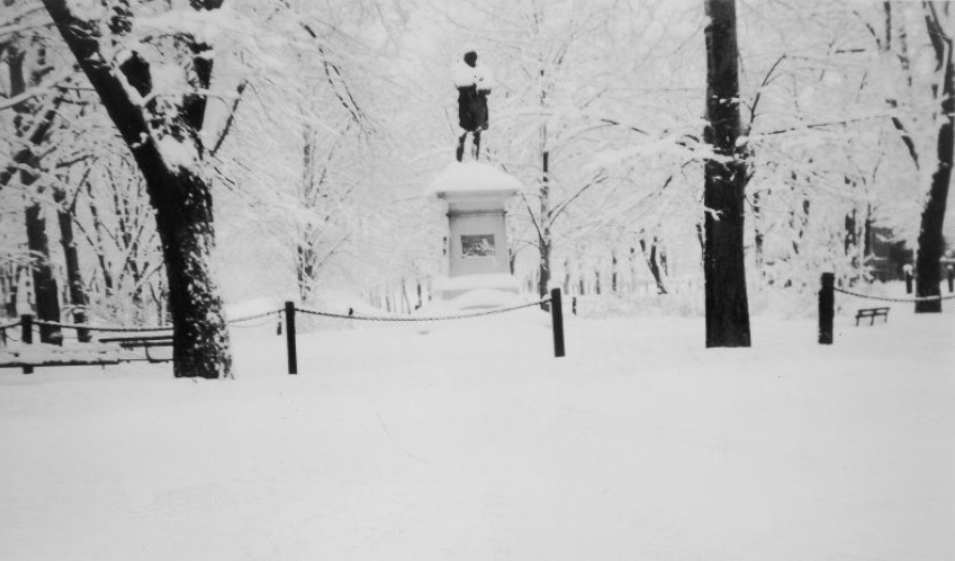
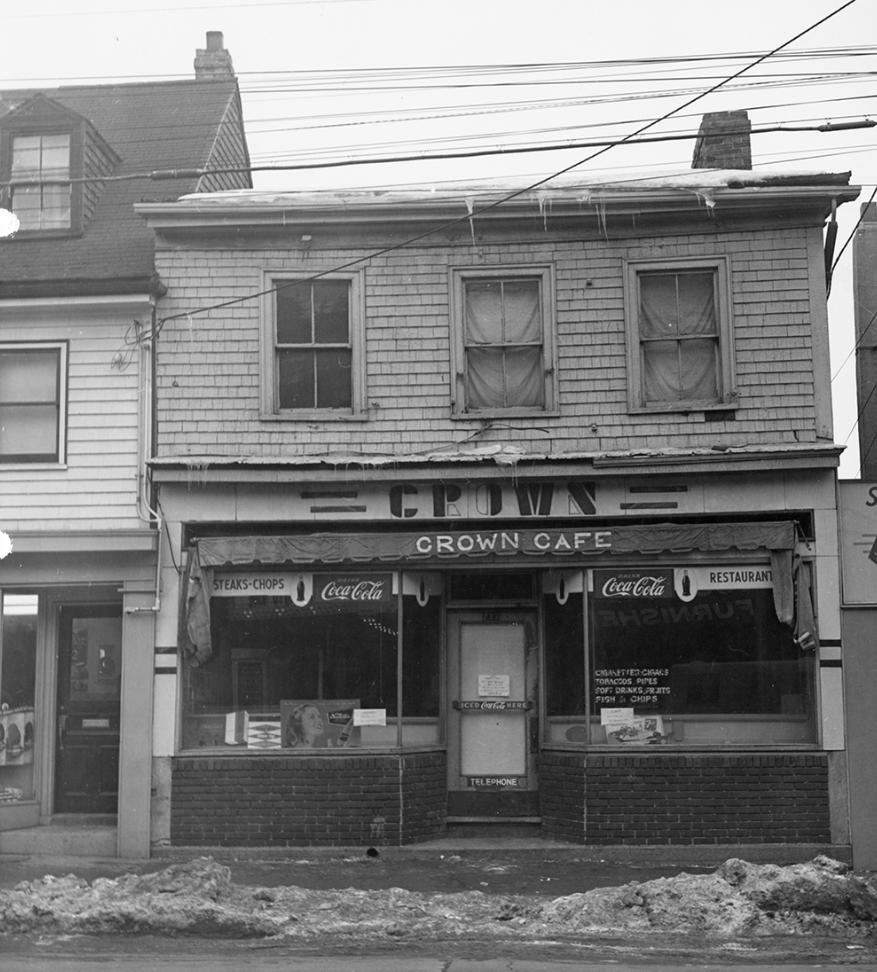
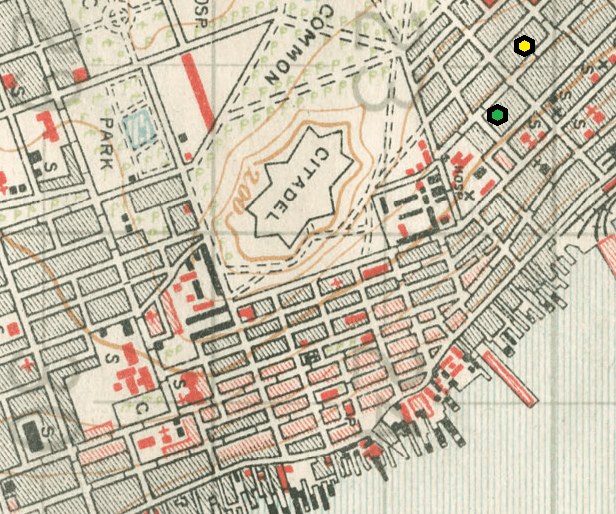
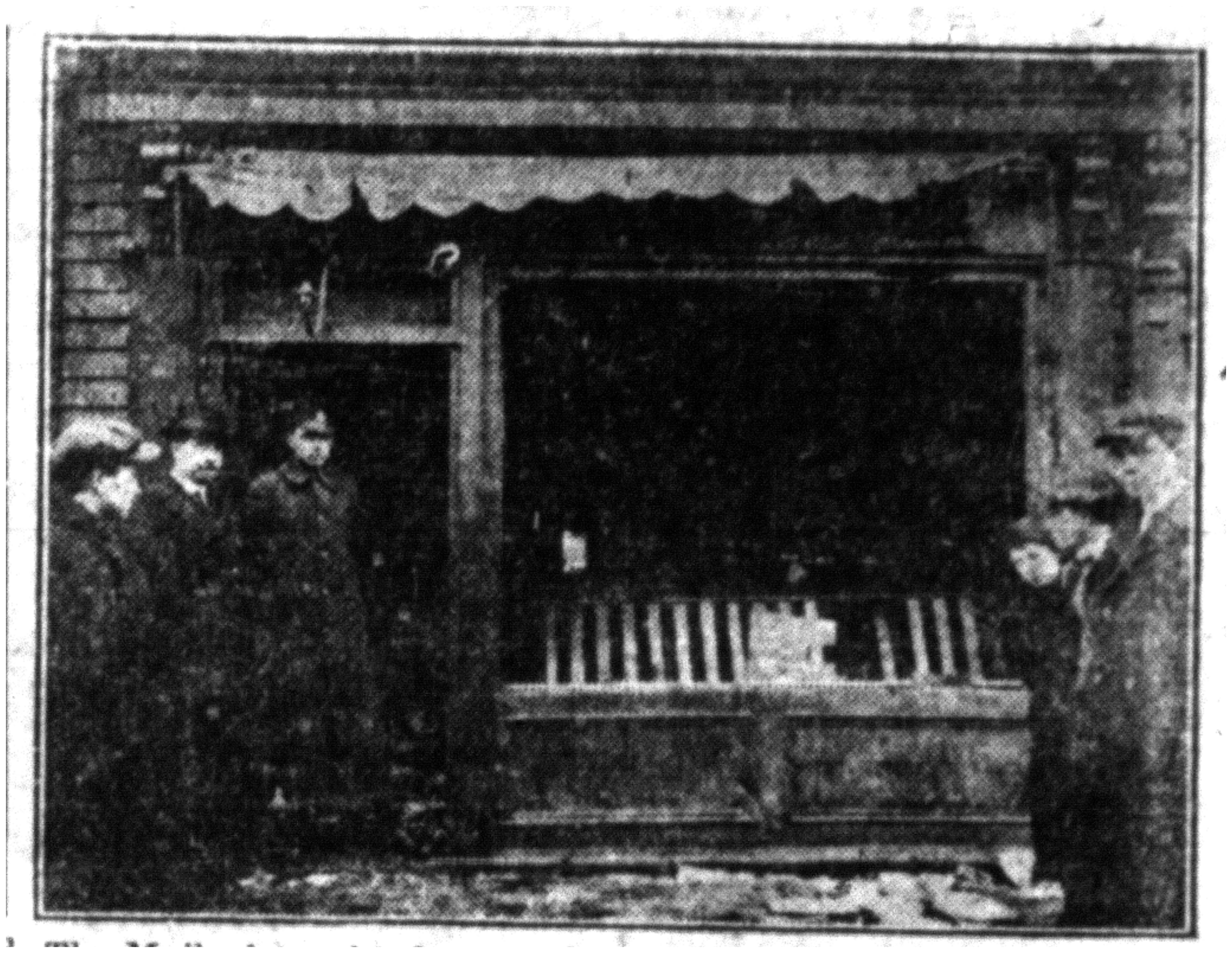
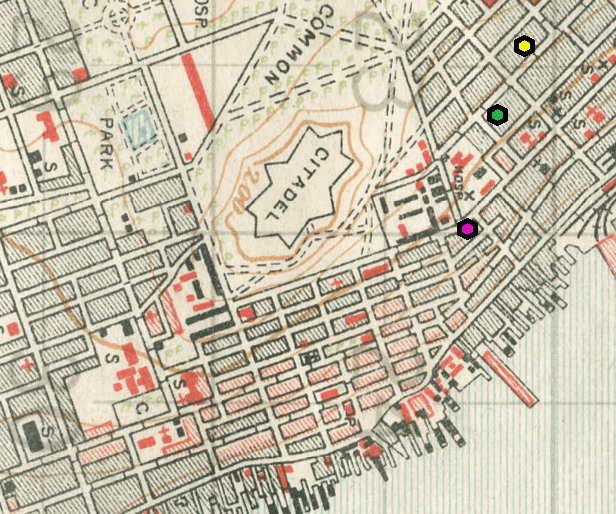
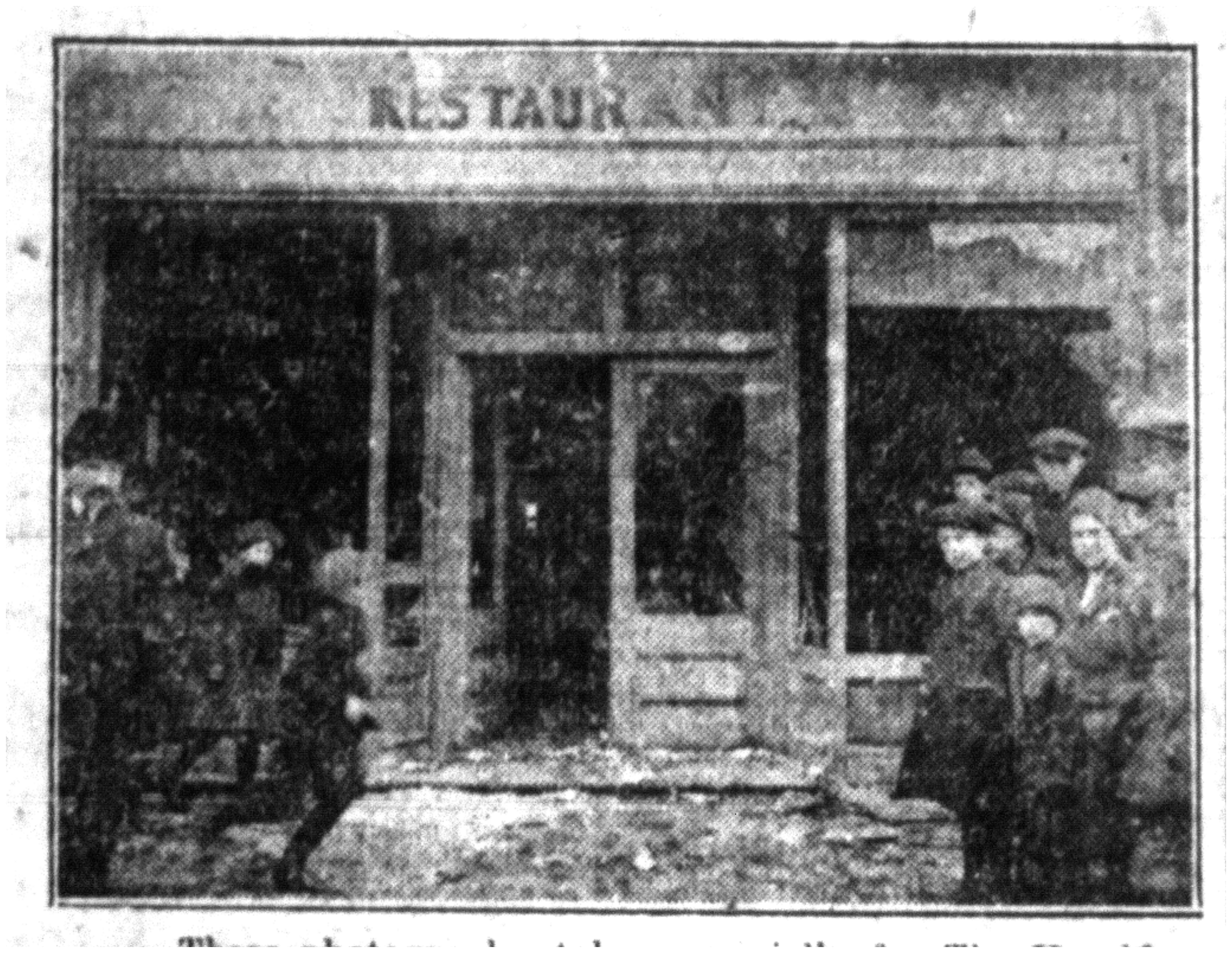
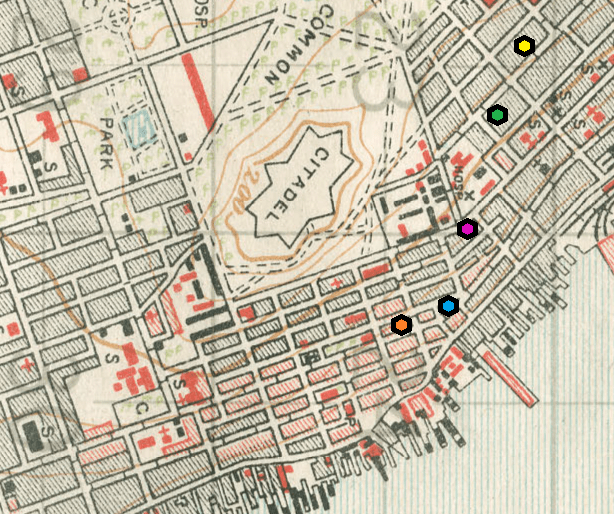
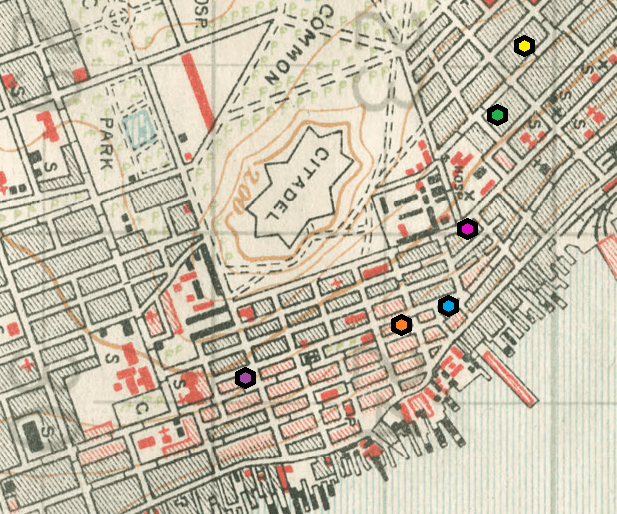

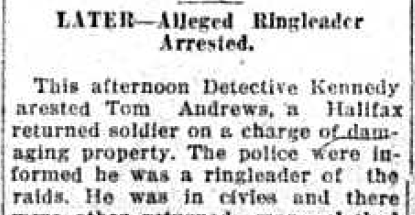
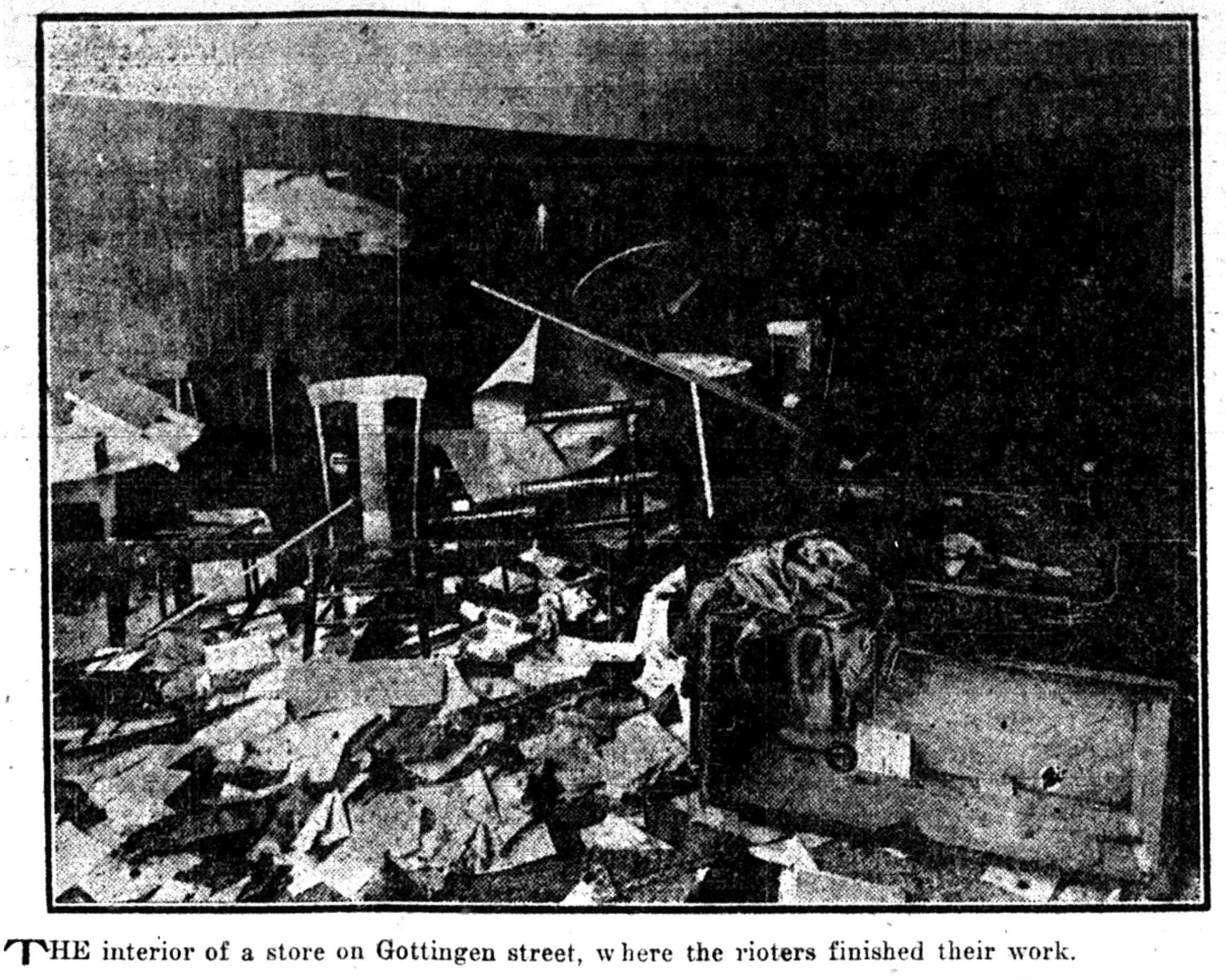


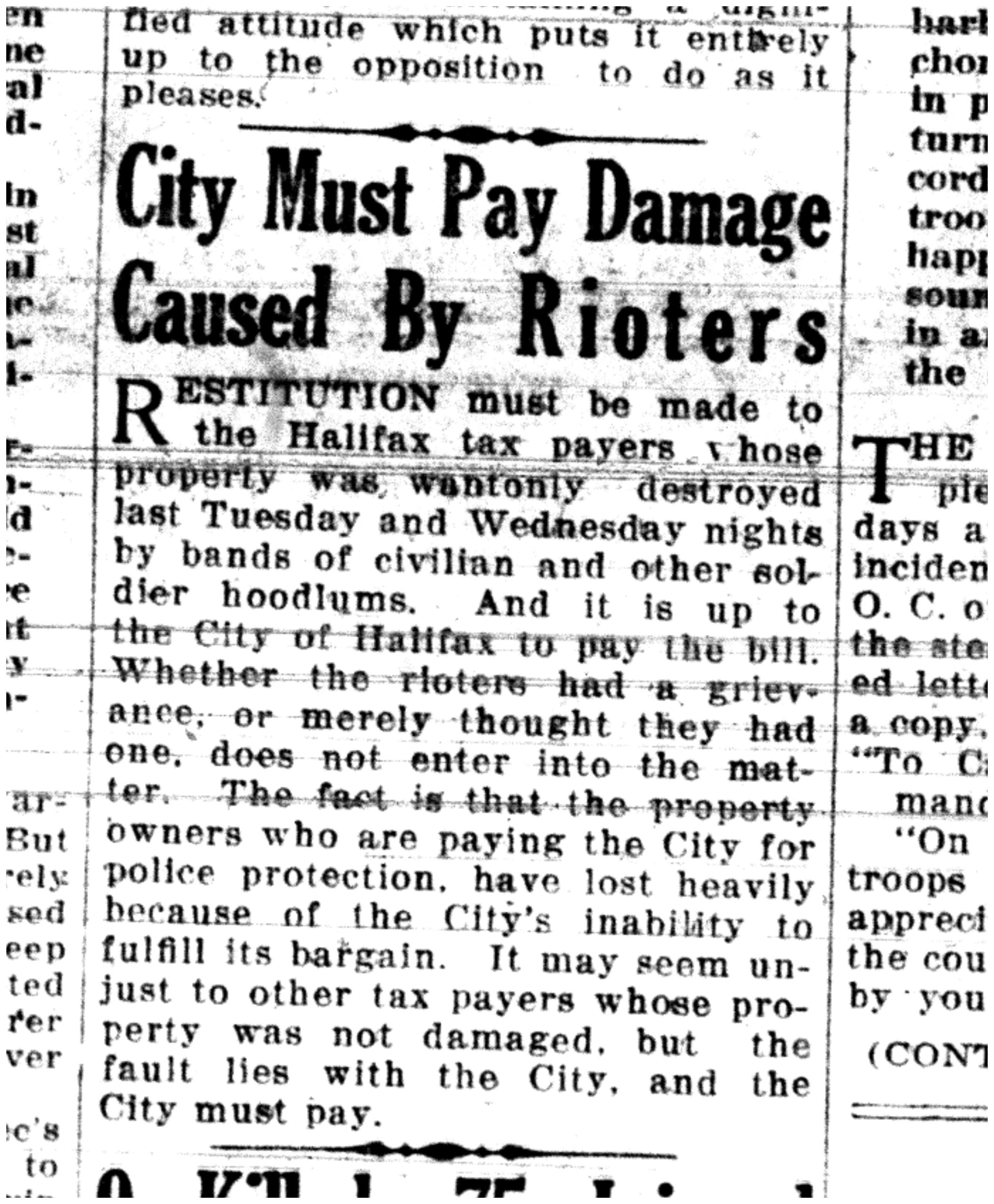

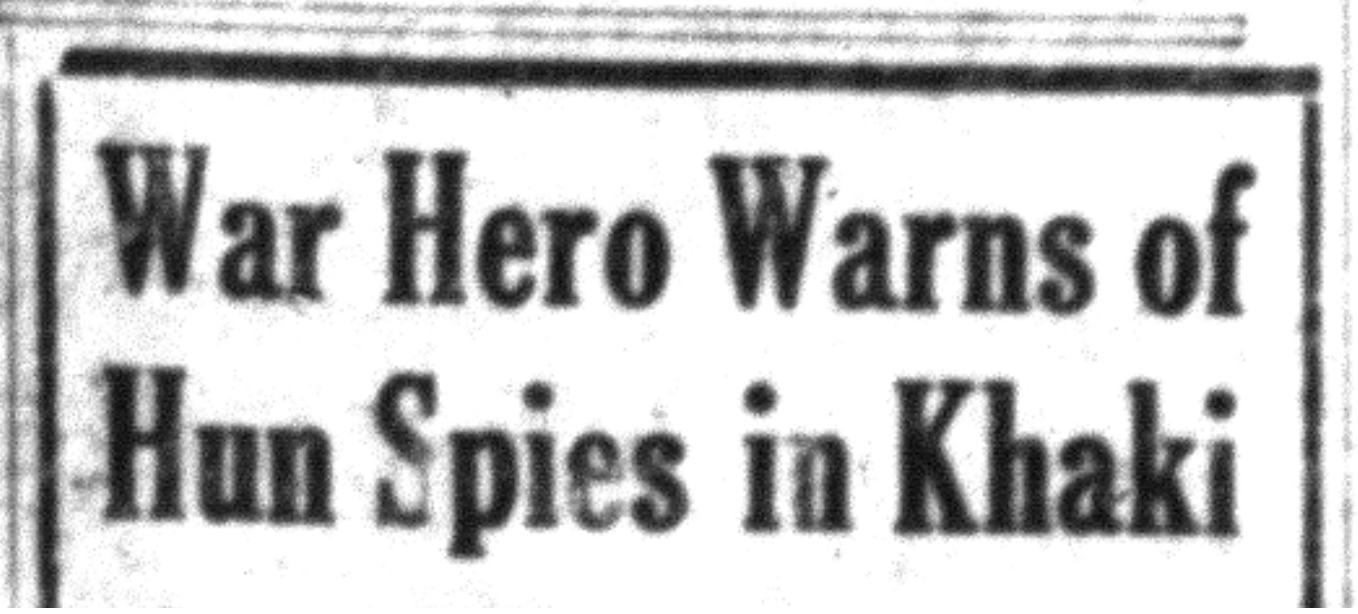
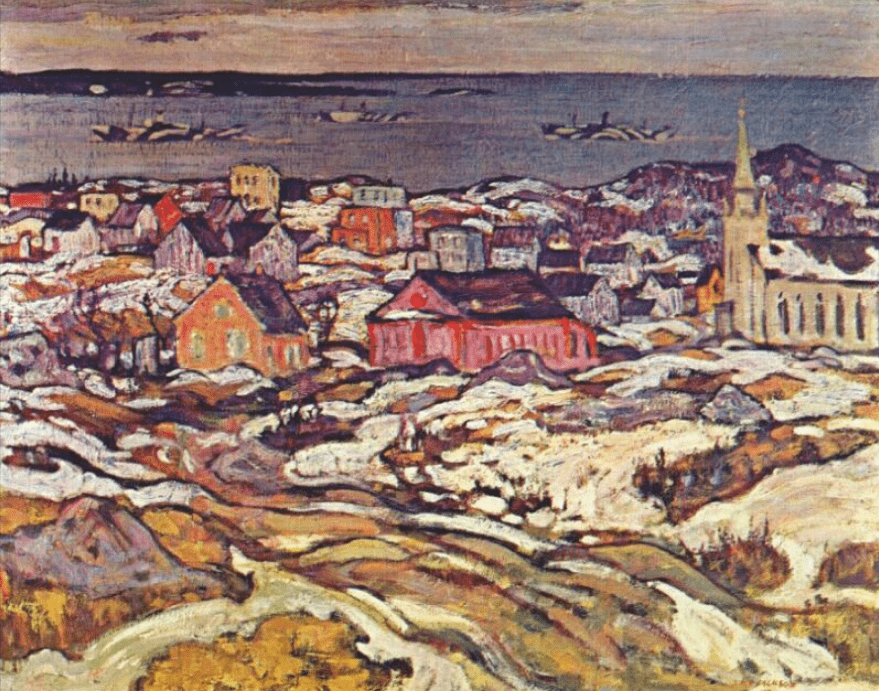

Add a comment to: The 1919 Anti-Chinese Riots: A Brief and Not At All Definitive History